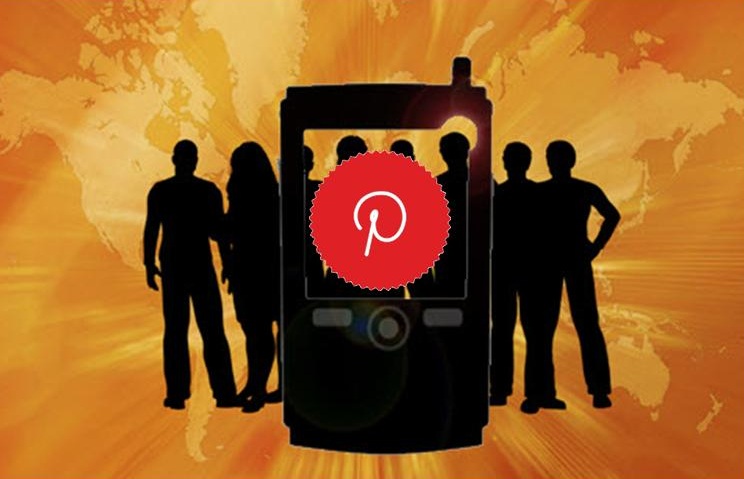A new research study has revealed that these shoppers are enjoying the opportunities that smartphone shopping provides.
According to a report that has been published by eMarketer, retailers that are hoping that their holiday shopping sales will be better than ever, this year, will likely want to look into targeting more mobile commerce campaigns toward shoppers within the Hispanic community.
The research revealed that Hispanic shoppers within the United States are using m-commerce to buy.
The eMarketer report revealed that in the U.S., Hispanic consumers have a greater likelihood to make a purchase by way of a smartphone or tablet than their non-Hispanic counterparts. The research was conducted in August and showed that 52 percent of Hispanic shoppers had purchased clothing over mobile commerce within the month prior to the survey. Comparatively, only 38 percent of non-Hispanic shoppers had done the same.
That said, there were many other areas in which Hispanic shoppers used mobile commerce more than non-Hispanics.
 Among those areas of m-commerce where Hispanic consumers were shopping more included electronics, music, as well as movie tickets. Moreover, making purchases wasn’t the only shopping activity that was conducted over smartphones and tablets by consumers within this demographic. They were also reading reviews of the products that they were considering (53 percent). Non-Hispanics read reviews over mobile devices only 44 percent of the time.
Among those areas of m-commerce where Hispanic consumers were shopping more included electronics, music, as well as movie tickets. Moreover, making purchases wasn’t the only shopping activity that was conducted over smartphones and tablets by consumers within this demographic. They were also reading reviews of the products that they were considering (53 percent). Non-Hispanics read reviews over mobile devices only 44 percent of the time.
As Hispanic shoppers informed themselves about products they were considering, they also looked into expert product ratings and not just those left behind by other shoppers. Thirty six percent of shoppers within that ethnic background had searched for the advice of an expert when deciding whether or not they would buy an item or service. Among non-Hispanics, that figure was only 26 percent.
Online videos and social media about products were the two other most important areas where Hispanic shoppers were seeking out information when they were considering a purchase over mobile commerce. That said, among all of the American shoppers, regardless of ethnic background, almost half of the participants in the research had made purchases over a smartphone or tablet during the month previous to the study.
Though this network may not find itself in a lot of headlines, it is a more powerful platform than they give it credit for.
While Facebook and Twitter often receive a great deal of attention when it comes to social media marketing, as does YouTube, Pinterest rarely even receives a notable mention in these same conversations, despite the fact that it has started to define itself as quite a powerful platform, especially when it comes to mobile marketing campaigns.
The social sharing platform that uses a pinboard style is highly popular and yet not nearly as widely studied.
That said, Pinterest is now reportedly intending to boost their overall advertising offerings in 2015. This will be especially focused on expanding the impact that it has among mobile marketing firms, as smartphone and tablet using consumers already appreciate the format of this platform. It will be interesting to see if this will finally put the spotlight onto this network when it appears to have been flying under the technology radar for such a long time.
Pinterest is looking to be able to boost its revenue by broadening its social media marketing offerings.
 The social network is gearing up to boost the mobile advertising revenue that it brings in by expanding its Promoted Pins service in a “responsible” way. It has been reported by NativeMobile that the company is hoping to see a growth of 300 percent in its Promoted Pins by the end of next year.
The social network is gearing up to boost the mobile advertising revenue that it brings in by expanding its Promoted Pins service in a “responsible” way. It has been reported by NativeMobile that the company is hoping to see a growth of 300 percent in its Promoted Pins by the end of next year.
The platform has taken a unique stance when it comes to social media marketing in that it focuses primarily on the user experience. It feels that it understands that there is a line between being useful and effective in terms of marketing, and going too far and simply irritating users with ever present ads.
Though they know that there is a chance that there could be a reduction in the potential profits by creating a limit to the expansion of the advertising component of the platform, they are willing to take this risk as they prefer to ensure that their users will continue to enjoy their experience on the site and the app instead of simply giving in to every advertiser that is willing to pay for premium pin placement on the streams of targeted users.
As of yet, the Promoted Pins social media marketing program at Pinterest has been reported as a powerful success, and there has been every indication that advertisers are looking to be able to use it even more.
 Among those areas of m-commerce where Hispanic consumers were shopping more included electronics, music, as well as movie tickets. Moreover, making purchases wasn’t the only shopping activity that was conducted over smartphones and tablets by consumers within this demographic. They were also reading reviews of the products that they were considering (53 percent). Non-Hispanics read reviews over mobile devices only 44 percent of the time.
Among those areas of m-commerce where Hispanic consumers were shopping more included electronics, music, as well as movie tickets. Moreover, making purchases wasn’t the only shopping activity that was conducted over smartphones and tablets by consumers within this demographic. They were also reading reviews of the products that they were considering (53 percent). Non-Hispanics read reviews over mobile devices only 44 percent of the time.
 The social network is gearing up to boost the mobile advertising revenue that it brings in by expanding its Promoted Pins service in a “responsible” way. It has been reported by NativeMobile that the company is hoping to see a growth of 300 percent in its Promoted Pins by the end of next year.
The social network is gearing up to boost the mobile advertising revenue that it brings in by expanding its Promoted Pins service in a “responsible” way. It has been reported by NativeMobile that the company is hoping to see a growth of 300 percent in its Promoted Pins by the end of next year.